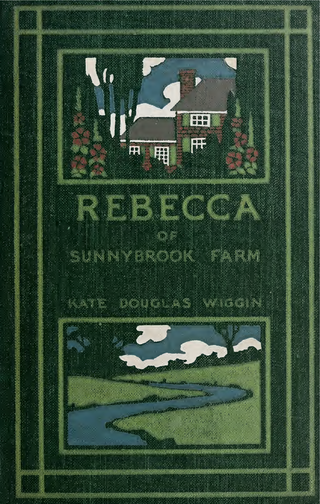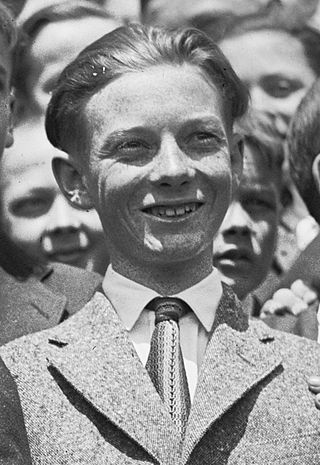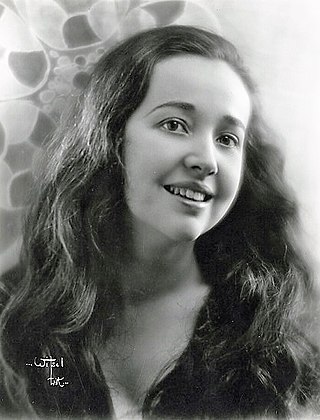Related Research Articles

Allan Dwan was a pioneering Canadian-born American motion picture director, producer, and screenwriter.

Alfred Allen Santell (1895–1981), was an American film director and film producer.

Rebecca of Sunnybrook Farm is a classic American 1903 children's novel by Kate Douglas Wiggin that tells the story of Rebecca Rowena Randall and her aunts, one stern and one kind, in the fictional village of Riverboro, Maine. Rebecca's joy for life inspires her aunts, but she faces many trials in her young life, gaining wisdom and understanding. Wiggin wrote a sequel, New Chronicles of Rebecca. Eric Wiggin, a grand-nephew of the author, wrote updated versions of several Rebecca books, including a concluding story. The story was adapted for the theatrical stage and filmed three times, once with Shirley Temple in the title role, as well as a Japanese animated short as part of the Anime Tamago project.

Charles Stanton Ogle was an American stage and silent-film actor. He was the first actor to portray Frankenstein's monster in a motion picture in 1910 and played Long John Silver in Treasure Island in 1920.

Marshall Ambrose "Mickey" Neilan was an American actor.

Rebecca of Sunnybrook Farm is a 1917 American silent comedy-drama film directed by Marshall Neilan based upon the 1903 novel of the same name by Kate Douglas Wiggin. This version is notable for having been adapted by famed female screenwriter Frances Marion. The film was made by the "Mary Pickford Company" and was an acclaimed box office hit. When the play premiered on Broadway in the 1910 theater season the part of Rebecca was played by Edith Taliaferro.

Arthur Charles Miller, A.S.C. was an American cinematographer. He was nominated for the Oscar for Best Cinematography six times, winning three times: for How Green Was My Valley in 1941, The Song of Bernadette in 1944, and Anna and the King of Siam in 1947.

Wesley Barry was an American actor, director, and producer. Barry began his career as a child actor in silent motion pictures and later became a producer and director of both film and television. As a director, he was sometimes billed as Wesley E. Barry.
Rebecca of Sunnybrook Farm is a 1932 film based on the 1903 children's classic novel by Kate Douglas Wiggin.

Rebecca of Sunnybrook Farm is a play written by Kate Douglas Wiggin and Charlotte Thompson. It is an adaptation of Wiggin's novels about the character Rebecca Rowena Randall, including elements from the 1903 novel of the same name and the 1907 follow-up, New Chronicles of Rebecca. Producers Klaw and Erlanger debuted it at the Court Square Theatre in Springfield, Massachusetts on November 15, 1909. After touring New England for a season, it appeared on Broadway, opening at the Republic Theatre on October 3, 1910. The play received positive reviews and was used as the basis for subsequent movie adaptations.

Rebecca of Sunnybrook Farm is a 1938 American musical comedy film directed by Allan Dwan, and written by Don Ettlinger, Karl Tunberg, Ben Markson and William M. Conselman, the third adaptation of Kate Douglas Wiggin's 1903 novel of the same name.

Marian Nixon was an American film actress. Sometimes credited as Marion Nixon, she appeared in more than 70 films.

Violet Mersereau was an American stage and film actress. Over the course of her screen career, Mersereau appeared in over 100 short and silent film features.

Helen Jerome Eddy was a motion picture actress from New York City. She was noted as a character actress who played genteel heroines in films such as Rebecca of Sunnybrook Farm (1917).

Ella Cinders is an American syndicated comic strip created by writer Bill Conselman and artist Charles Plumb. Distributed for most of its run by United Feature Syndicate, the daily version was launched June 1, 1925, and a Sunday page followed two years later. It was discontinued on December 2, 1961. Chris Crusty ran above Ella Cinders as a topper strip from July 5, 1931 to July 6, 1941.

Josephine Boneparte Crowell was a Canadian film actress of the silent era. She appeared in more than 90 films between 1912 and 1929.

Mayme Kelso was an American actress of the silent era. She appeared in more than 70 films between 1911 and 1927. She was born in Columbus, Ohio, and died in South Pasadena, California from a heart attack. She is especially known for her performances in Seven Keys to Baldpate (1925), Male and Female (1919), and Clarence (1922).

Ella Cinders is a 1926 American silent comedy film directed by Alfred E. Green, starring Colleen Moore, produced by her husband John McCormick, and featuring Moore's recurring co-star, Lloyd Hughes. The film is based on the syndicated comic strip of the same name by William M. Conselman and Charles Plumb, which in turn was based upon the millennia-old folk tale of Cinderella.
Willis Marks was an American silent film actor.
Arthur Martinelli was an American cinematographer whose career spanned from the silent era through the golden age of American movies. During that time he shot over 100 films. A pioneer in the industry, he was the cinematographer to film the first movie to star Ethel and John Barrymore.
References
- ↑ Stumpf, Charles (2010-04-13). ZaSu Pitts: The Life and Career. McFarland. ISBN 9780786460236.
- ↑ "Mrs. Beaver Home". The News-Review. 1 Nov 1947. Retrieved 2019-09-04.
- ↑ "Farm Life First Called Film Players in Ella Cinders". Times Colonist. 24 Jun 1926. Retrieved 2019-09-04.
- ↑ Artcraft Advance. Artcraft Pictures Corporation. 1917.